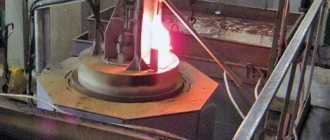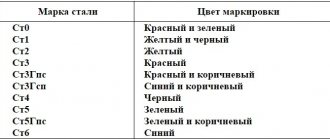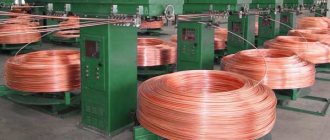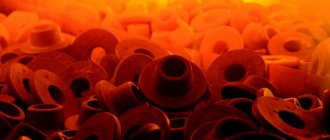Copper plating is the process of applying a copper layer to the surface using an electroplating method.
The copper layer gives the product visual appeal, which allows the use of copper electroplating in design projects. It also gives the metal high electrical conductivity, which allows the product to be subjected to further surface treatment.
Copper plating can be used as the main process to create a surface layer, and also as an intermediate operation for the subsequent application of another metal layer. This method includes, for example, the process of silvering, chrome plating or nickel plating.
Copper plating can be done at home. This makes it possible to solve many everyday problems.
Electroplating with copper at home: general information
From a technical point of view, processing is an electrochemical process. There are always two “participants” in the process: the anode + electrolyte (metal source) and the part.
The technology of copper electroplating at home is quite simple. It consists in the fact that due to the electrolyte and the current conducted through it, metal atoms are released. They settle on the surface, forming a copper coating.
Among the main stages of electroplating copper plating at home:
- Surface preparation (mechanical and chemical).
- Applying an undercoat (if necessary)
- Copper plating in an electrolyte corresponding to the original metal.
For decorative galvanic copper plating, matte and shiny copper plating electrolytes are suitable. After applying the layer, you can treat the surface in electrolytes of silver, gold, nickel, etc.
What is the copper plating process?
Copper plating is the process of applying a thin layer of copper to the surface of an object. It is performed by the galvanic method, that is, by transferring copper ions from a positively charged source to a negatively charged surface to be treated. Most often, the process of electroplating copper is a preparatory step before plating with nickel and chromium, but often copper plating of metal becomes an independent type of finishing. Electroplating, which requires the creation of a copper coating, is widely used.
Necessary tools for copper plating at home
“Ingredients” without which copper plating will not take place, but which can actually be prepared at home. Our galvanists claim that, first of all, we need:
- DC source. Selected depending on the size of the product.
- Anodes. Anode plates perform several functions. First of all, they supply current to the electrolyte, and secondly, they compensate for the loss of metal that goes into coating the product.
- Working electrolyte. Acidic, alkaline or pyrophosphoric solution. The composition of the electrolyte is selected depending on the starting metal. It must be remembered that any electrolyte is not universal and is not suitable for all jobs.
New properties of steel after copper plating
Copper plating increases the corrosion resistance of steel and enhances its strength. Especially reliable will be a multilayer coating, which also includes layers of chromium or nickel on top of copper. If copper plating is done first, then the entire surface will be ductile and not prone to abrasion. It is impossible not to note the improved decorative properties of products after copper plating - they acquire a beautiful shine and an “antique” appearance.
Antique copper coating of products
Copper adheres reliably to the steel surface, but without additional protective measures it is not retained for long. The destruction of the copper layer occurs under the influence of temperature changes and atmospheric factors. Applying a special varnish to the product will help reduce the risk of cracking.
Preparation of material
How to properly prepare a simple copper plating electrolyte
It is worth noting that electroplating with copper at home is difficult because the chemicals are not easy to find. Companies selling such products do not sell them without special documents. But you can do everything yourself.
It is possible to prepare electrolyte at home only if the recipe is strictly followed. The simplest electrolyte contains:
- Distilled water (or bidistillate).
- Copper sulfate.
- Hydrochloric or other acid.
The finished solution has a bright blue color and no odor. Some sediment may be present. It is important to follow all safety precautions with chemical reagents, especially at home: protect your hands and eyes first. Clothes on which the solution could accidentally spill are best classified as summer clothes.
It is better to store such liquid in glass bottles or plastic canisters, and be sure to indicate the date of bottling and the name of the solution. Proper storage of components will save you from possible problems. Electrolyte preparation should take place in clean plastic or glass containers.
Preparing material for copper plating at home
Chemical copper plating is an alternative to the electrochemical method, but cannot always replace it. In this process, it is important to carefully prepare the part, completely eliminating scratches, dirt, chips, etc. In order to degrease an item, you can use both pure solvents and degreasing solutions.
However, there is no universal method - different types of metal are cleaned in different ways:
- Steel. You can degrease steel with a solution containing caustic sodium and caustic potassium at 70-90 degrees Celsius. This will take about 20-30 minutes. Be careful and use a hood.
- Copper and alloys. Degreasing is carried out with sodium hydroxide, preheated to 40°, for about 10 minutes.
- Cast iron. The degreasing process requires a solution containing sodium hydroxide, liquid glass, sodium carbonate and sodium phosphate when heated to 90°.
- Tungsten. Copper plating of tungsten at home begins with cleaning the object from dirt and other defects with sandpaper.
History of the discovery of copper
Copper is the first metal that was conquered by man and played the greatest significance in the history of the development of civilization. This event took place several thousand years BC, and the exact date of the beginning of the use of this unique metal could not be established.
In ancient times, copper nuggets were used mainly to create weapons and household tools. Red-green metal nuggets were initially used in the same way as ordinary stones. Later, through experience, people noticed that processing this material with a hammer gives it special properties. This is how cold metal forging was born.
Even later, it was discovered that the metal melts and, after cooling, takes on different shapes and properties. This stage was the initial stage in the development of hot metal forming.
Safety precautions for copper plating at home
Despite the possibility of electroplating at home (copper plating), the process remains dangerous. Any galvanic process involves toxic substances that can become very hot. Therefore, precautions must be strictly observed.
The first rule of copper electroplating at home is to work only in a non-residential, well-ventilated area. Places such as a workshop or garage are suitable. The second rule is that the equipment used must be grounded. Third is personal safety.
To ensure your own protection when copper plating at home you need:
- Wear a respirator at all times to protect your airways. It is best to use a hood.
- Protect your hands with durable rubberized gloves.
- Wear a special uniform or oilcloth apron and anti-burn shoes.
- Don't forget glasses for visual safety.
- Do not bring food or drink into the premises.
Before copper plating, it is better to take care of reading specialized literature on this topic in advance. It is advisable to consult with specialists in this field.
Characteristics and composition of copper
Copper is a heavy metal with a rose-red color, which is highly soft and melts at a temperature of more than 1080℃. The electrical conductivity of copper coating is 1.7 times higher than that of aluminum. Copper also has high thermal conductivity.
Many specific properties of the metal are due to the presence of various impurities in its composition. So, according to the oxygen that copper contains, the metal is divided as follows:
- copper without oxygen contains impurities of less than 0.001%;
- refined copper contains oxygen 0.001–0.01%;
- pure copper contains oxygen about 0.03–0.05%;
- General purpose copper contains 0.05–0.08% oxygen.
The presence of lead or bismuth in copper reduces the plasticity properties of the material. Slightly soluble impurities (sulfur, lead, bismuth) increase the fragility of the metal.
During the electrolysis process, in addition to oxygen, hydrogen can enter the composition of copper alloys.
Electroplating at home: copper plating
Why is copper so popular in electroplating? It has high adhesion (in other words, grip) to a wide variety of materials. This means that it adheres perfectly to products made of steel and tungsten, without flying off or chipping.
Copper is a beautiful bright metal that looks like pink-red nuggets. The material conducts not only heat, but also electric current - hence the high demand in the field of electrical engineering and instrument making. However, pure copper is difficult to find. More often it comes with various impurities.
Copper coatings:
- They are characterized by low resistance, which is used in electrical engineering
- Hides minor surface imperfections.
- It oxidizes quickly, which is used to obtain an “antique” effect.
There are two copper plating technologies. One occurs by immersing the product in an electrolyte solution (with or without current supply). The second method is a method of selective coating without immersion in a solution. Let's look at both.
Immersion method
At home, the surface to be electroplated should be carefully treated. For example, sandpaper and a brush. Afterwards, be sure to degrease the part and rinse it.
Further:
- The anode plate (two are possible) is placed in a container, which we will call a bath. The positive terminal is connected to the anodes.
- A part is suspended between the anodes on any convenient conductor, and the negative pole from the power supply is connected to it.
- The finished solution is poured into the bath - in this case, the coating level should be higher than the part is located.
- After connecting the electrodes to the current source, the operating current is set. This is approximately 1 A/sq.dm. coverings.
The duration of work depends on the required layer thickness, usually from 5 minutes.
Non-immersion coating
This method of copper plating has limitations - most often it is suitable for surface restoration. This method can only apply a small thickness of metal. There is no point in coating products using this method that can be copper plated in a bath. Procedure for galvanic copper plating at home:
- A “tampon” is prepared for applying the coating. Take a copper conductor and wrap a piece of artificial fabric (polyester is fine).
- The opposite end of the conductor is connected to the positive terminal of the voltage source.
- Fill the container with an electrolyte solution - this makes it easier to dip the pencil.
- The part is carefully cleaned and degreased, and then placed in an empty bath. There the product is connected to the negative terminal.
- The swab is moistened in the solution. Then it is passed over the surface of the product, painting it gradually.
The process lasts until the product is completely covered with a copper layer.
Types of copper plating
- Using electrolyte immersion;
- Without immersion in electrolyte.
The first method involves treating a metal product with sandpaper, a brush and rinsing with water. After which degreasing in a hot soda solution with repeated rinsing. Next, two copper plates – anodes – are lowered into a glass container on copper wires. The part is suspended on a wire between the plates, after which the current is started.
The second method is relevant for products made of steel, aluminum and zinc.
Features of galvanoplasty at home
Electroplating is the process of depositing copper onto a conductive or non-conductive surface of a product and then removing the coating from the negative matrix. This way you can get many very accurate copies from one product. At the same time, there is a condition: build up copper with a thickness of at least 200 microns so that the product turns out durable.
It is important to consider that if the surface of the product does not have conductor properties, then more effort will be required - namely, a special preliminary coating with graphite, silver or copper. Copper is considered the main metal for electroplating, but matrices can be grown from silver with a purity of 9999.
Electroplating training
We can conclude that copper plating today is one of the most relevant electroplating processes that anyone can learn. conducts training in the field of "Galvanics" for everyone! You will be able to choose a training program that is convenient for you, which is best suited for electroplating at home and beyond. All questions you may have can be asked by phone or email; our technologists will advise you on training courses.
Video guide to copper plating parts at home:
You can find out more details at the link:
Gordienko Anastasia Vadimovna Author of the materials Position: chief technologist of 6 Micron LLC Education: higher Experience in galvanizing: 13 years
When placing an order online, get a 10% discount!
Our priority is an individual approach to each order and the quality of the work performed!
Send a request or ask a question:
4.1/5 — (570 votes)
Why is copper plating of metals carried out?
Copper plating is the application of a thin layer of copper to various materials and products. Typically the thickness of this layer is 1-300 microns. It is copper that has a number of properties that make it suitable for this manipulation. It is plastic and lends itself well to polishing. The galvanic layer on steel after copper plating has almost no pores.
In addition, copper is characterized by high electrical conductivity and is easy to solder. When using high-frequency signals, the highest current density occurs in the copper layer (skin effect), and the overall resistance decreases.
The areas of application of copper plating technology are extensive:
- creating an intermediate layer before chrome and nickel plating of various products (to reduce the risk of cracking during operation in difficult conditions);
- application in electroplating;
- thick-layer coating of complex models and artistic designs, production of copies of various products;
- production of radio engineering and electrical parts - contacts, conductors, antennas, waveguides;
- applying a conductive layer to plastic products;
- protection of rolled metal, sheet iron, profiles.
Stability of solutions for chemical copper plating.
The following methods can be used to increase the stability of chemical copper plating solutions:
- Maintain acidity and concentration of stabilizers within established limits;
- Do not exceed the optimal loading density;
- Avoid the presence of metal surfaces in the solution other than those being coated;
- When chemical copper plating of dielectrics, exclude the possibility of introducing the activator into the chemical copper plating bath;
- Remove mechanical impurities from the solution by mechanical filtration;
- Pump the solution at the end of the shift into a spare container, and then clean the old one;
- Use compressed air to stir the chemical copper plating solution;
- Use swinging rods with copper-plated parts.;
- Eliminate the formation of gas bags in copper-coated parts;
- Remove metal residues from pendants.
Electrodes for copper welding
To connect copper without filler wire, consumable electrodes with a special coating are used. When melted, it creates a layer of slag that protects the welding site from contact with air. The additives included in the coating combine with the metal to improve the quality of the seam. The slag layer slows down the cooling of the joint, which helps remove more gases.
Non-consumable carbon and graphite electrodes are used in conjunction with the filler wire required to create the weld. When choosing, you should consider that:
- for manual welding of copper, the coating color is red;
- Gray coated grades are intended for non-ferrous metals;
- blue electrodes are used to cook refractory metals;
- heat-resistant alloy steel with yellow coating.
Copper Welding Machine
The main units are defined as semi-automatic, automatic, argon, inverter units. Each of the devices performs work in a different production method and is equipped with distinctive characteristics.
- The connection of copper plates can be carried out in an argon environment by tungsten-type organs. Modern inverters are powered from the household network, equipped with an autonomous cooling system, and are lightweight.
- Semi-automatic installations are used with wire. There are various components, including domestic ones, that are not inferior to their imported counterparts in terms of performance.
- Copper wires are also connected by an inverter, the main feature is efficiency, low power consumption. Anti-stick protection and hot start will allow a novice master to operate without prior training.
Homemade welding machine for welding with carbon electrodes
For home use, the best choice is a unit with a power of up to 3.5 kW. The output power is sufficient to connect 5 mm thick copper. Low-resource mechanisms will not harm the household electrical network and will prevent the failure of devices.
Purposes of using patination
The main purpose of using copper darkening is to give an aging effect to the metal being processed.
In ancient times, most products (coins, figurines, various souvenirs, household items) were made from this material. Having reached our time, objects have undergone some transformations - oxidative processes have changed the color and general appearance of these things, creating all the signs of antiquity and, therefore, value. Nowadays, patination of copper is done artificially, but they pursue a single goal - to give the thing a rare look, attract attention, and arouse the desire to purchase it.
Characteristics of copper-plated metals
Under the influence of atmospheric factors, it quickly deteriorates, and even at home it is usually coated with varnish. At the same time, the copper sublayer significantly improves the characteristics of multilayer coatings in terms of mechanical strength and corrosion resistance.
Stainless steels are typically protected from corrosion by a three-layer coating of chromium, nickel and copper. In this case, copper plating is carried out first in order to ensure the ductility of the entire composite layer when using the product under conditions of variable loads.
Copper plating plays exactly the same role in coatings of rolled metal and sheet iron, from which profile products are made that are used in marine climates and aggressive environments. Copper-plated wires and aluminum contacts are easy to solder and have lower resistance, especially at high frequencies.
The technical conditions of electrolysis make it possible, when copper plating metals for decorative purposes, to paint the surface layers of copper in various colors and give them additional shine (in the photo below - copper plating on stainless steel).










